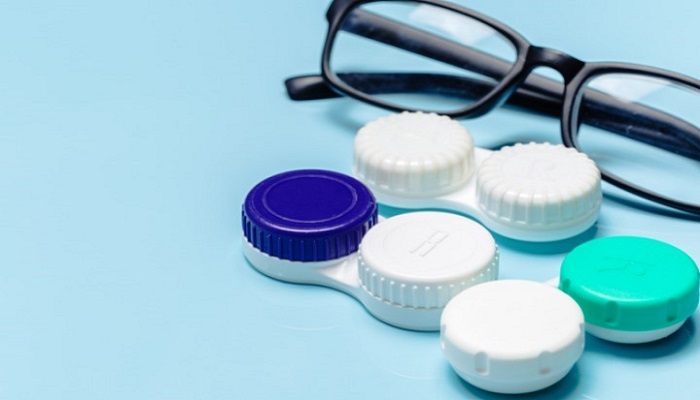In today’s visually demanding world, clear and comfortable vision is crucial. However, for many individuals, visual discomfort goes beyond simple refractive errors like myopia or astigmatism. A specific condition called binocular vision dysfunction (BVD) affects numerous people who struggle with their day-to-day visual needs. Unfortunately, misconceptions about corrective lenses for BVD are widespread. By debunking myths and providing accurate information, we can better understand the role of corrective lenses in managing BVD.
Understanding BVD and Its Impact
To fully appreciate the role of corrective lenses, it’s essential first to understand binocular vision dysfunction. BVD is a condition where the eyes cannot work together as a synchronized unit due to a misalignment. This misalignment can result in various binocular vision dysfunction symptoms such as blurred vision, headaches, eye strain, dizziness, and difficulty concentrating. While many people dismiss these symptoms as routine fatigue, they can severely impair one’s quality of life if left unaddressed.
The misalignment that causes BVD is often so subtle that it can be easily overlooked in a standard eye exam. As a result, individuals with BVD are often misdiagnosed or told they have no significant issues with their eyes. This leaves them searching for answers to their ongoing discomfort and visual difficulties. Corrective lenses, specifically designed for BVD, offer a viable solution by compensating for the misalignment.
Myth 1: “Corrective Lenses for BVD Aren’t Different from Regular Glasses”
One common misconception is that corrective lenses for BVD are essentially the same as traditional prescription glasses. However, this is far from the truth. Regular prescription glasses are designed to address refractive errors that affect how light is focused on the retina, such as nearsightedness or farsightedness. Conversely, corrective lenses for BVD focus on aligning the eyes correctly to reduce the symptoms associated with eye misalignment.
These lenses often contain small amounts of prism, which helps redirect light so that the eyes can better focus on the same point. The unique prism adjustments are determined after a detailed examination, ensuring the eyes work harmoniously together. The result is reduced strain and alleviated symptoms that are common in BVD eyes.
Myth 2: “You Only Need One Pair of Glasses to Fix BVD”
Another myth surrounding BVD correction is that one pair of glasses will permanently resolve the condition. While corrective lenses can provide significant relief from BVD symptoms, they are not always a complete fix. For some individuals, the condition is chronic and may require ongoing treatment and adjustments to the prescription over time.
As with any condition, consistent follow-up with an eye care specialist is necessary to monitor changes in symptoms and eye alignment. Regular eye exams will ensure that the corrective lenses continue to work effectively and that adjustments can be made as needed.
Myth 3: “Corrective Lenses Only Mask Symptoms Without Treating the Cause”
Some critics argue that corrective lenses only mask BVD symptoms without addressing the root cause of the problem. However, this is a misconception. The prism technology incorporated into these lenses helps align the eyes more effectively, directly addressing the misalignment causing the symptoms.
In many cases, patients who have worn these lenses for some time report a noticeable improvement in their binocular vision function even without glasses. This gradual improvement is likely due to the eyes becoming better trained to work together through continued use of corrective lenses. Moreover, some specialists combine prism glasses with vision therapy exercises to enhance and accelerate progress.
Understanding the Solutions Available
Corrective lenses for BVD are just one part of the solution to managing this condition. Depending on the severity of the symptoms and the specific type of misalignment, additional treatments may be recommended. Here are a few other approaches that may complement corrective lenses:
- Vision Therapy: Customized exercises designed to improve coordination and teamwork between the eyes.
- Surgery: In extreme cases, surgical intervention may be required to correct significant misalignment.
- Lifestyle Adjustments: Reducing screen time, ensuring proper posture, and implementing regular eye breaks can reduce the strain on BVD eyes.
Finding the Right Specialist
Finding a specialist knowledgeable in diagnosing and treating BVD is critical to getting the appropriate corrective lenses and other treatments. A comprehensive eye exam that includes assessments for binocular vision dysfunction symptoms is essential for accurate diagnosis. Optometrists specializing in binocular vision disorders can provide tailored treatment plans that address individual needs.
Conclusion
Corrective lenses for BVD play a crucial role in managing the symptoms of this condition. By reducing eye strain, headaches, and dizziness associated with BVD, these lenses can significantly improve quality of life. It’s important to understand that corrective lenses are not a one-size-fits-all solution. However, they offer much-needed relief for individuals struggling with visual discomfort due to BVD.
Debunking myths around corrective lenses and understanding the solutions available will ensure that more people seek the help they need. If you or someone you know is experiencing symptoms that sound like BVD eyes, consulting an eye care professional who specializes in binocular vision dysfunction can be a vital step toward clarity and comfort.


















